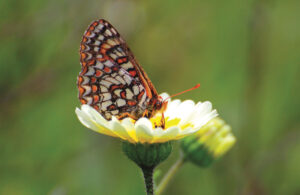A self-described “bird evangelist,” Alvaro Jaramillo loves to share his lifelong passion for birds both locally and on tours throughout the Americas with Alvaro’s Adventures. Born in Chile, Alvaro began birding in Toronto, where he lived as a youth. Asked why birds got his attention, Alvaro says, “They’re easy to relate to — you can see them, you can hear them sing. There’s always a bird around — if you try to find a mammal it can take you a day or two to find one!”
Alvaro, a consulting bird biologist with the San Francisco Bay Bird Observatory, is the author of the authoritative guide Birds of Chile. He now lives with his family in Half Moon Bay.
BN: What originally brought you to the Bay Area?
AJ: I was raised and schooled in Canada, but came here because of my wife’s work – she was on the computer side of things. I’ve been here about 15 years now.
BN: How did you get involved with the San Francisco Bay Bird Observatory?
AJ: After I arrived here I was looking for things to do and started volunteering at the Coyote Creek Riparian Station banding birds and doing riparian restoration work. Coyote Creek eventually merged with the SFBBO.
BN: What have you worked on recently?
AJ: I recently wrote a birdwatching guide for the Carquinez Strait. I live on the coast, and I don’t get up to that area very often. It’s just a fantastic place, but not one where many birdwatchers go. We’re all creatures of habit; we go to the places close to home. But sometimes there are places in the Bay Area that just need a bit more exposure. It was great not only to produce Birding the Carquinez Strait with SFBBO but to experience it personally!
BN: What’s so special about the Carquinez Strait?
AJ: One of the great things is how it connects the Central Valley and the Bay Area; the birds change depending on whether you’re on the east side or west side of the strait. And I was really interested in some of the marsh birds. For instance, I heard a black rail in Martinez! For me, just to know it was there, such a rare bird in such a heavily visited park, was so important. Yet, there it was – not in a fenced-off wildlife preserve, but where there were lots of people around, flying their kites…. It gives you a sense of what people in the Bay Area have accomplished: A lot of land has been preserved, but we’re still considered an urban area. We’ve done a great job of living with nature.
BN: What’s one of your upcoming projects?
AJ: Right now we’re tracking California gulls in San Francisco Bay, and hope to expand this study to a greater geographic area. Why gulls? People say, “Yuck!” – they tend not to like gulls very much. But they’re almost like a reflection of our society! If you study gulls, you can find out how we’re affecting the natural world. We provide their food: They scavenge French fries on the ground in parking lots. They forage in the urban world, then fly back to the natural world and can affect other species, like endangered snowy plovers.
BN: What do you enjoy most about your work?
AJ: When I head out with first-time birders, they ask why I don’t get bored taking out novices. It’s the opposite – I relive the discovery with people seeing things for the first time! If you’re interested in the natural world, you can make a discovery any time you go outside – it depends how you’re looking at it. You might describe a whole new world or behavior. So whether I’m making a small or large discovery, I’m involved in figuring out how nature works. That’s really exciting.
BN: What’s your favorite park, hike, or place to go in nature in the Bay Area?
AJ: On land, one of my favorite places is Burleigh-Murray State Park in Half Moon Bay. One of the things I like about it is the lack of facilities – you can’t do much but walk up a single road. There are always birds and something to see. It’s different at different times of year – depending on what’s migrating through and what’s wintering there. And there’s almost no one around! On the water, one of my favorite things is to go offshore to the Continental Shelf where things really start happening – it really feels like you’re in true wilderness. You might as well be in the Amazon or East Africa. I can’t believe it’s only a few miles offshore.
Alvaro leads pelagic birding trips out of Half Moon Bay harbor and fall birding workshops at the San Francisco Bay Bird Observatory starting in August (learn about them on sfbbo.org). Visit his website to learn more.
Visit SFBBO’s website to order a free copy of Birding the Carquinez Strait.

.jpg)



